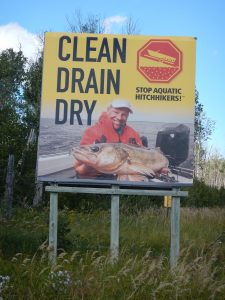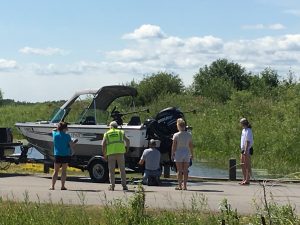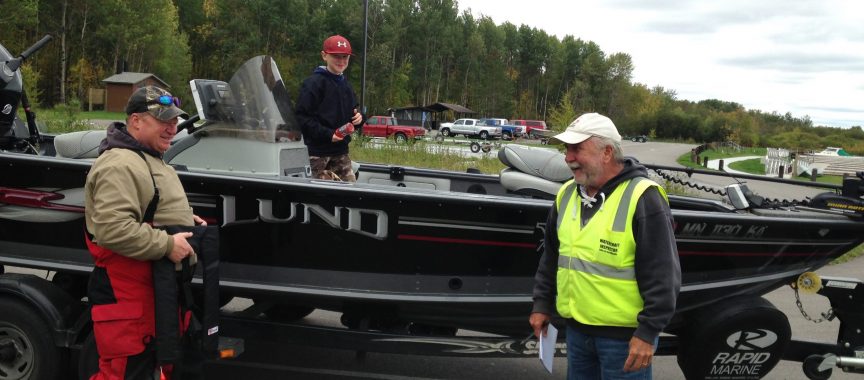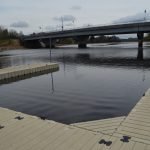Aquatic Invasive Species or AIS efforts continue to be strong around Lake of the Woods and the Rainy River. Through a combination of education, promotion and organization of AIS inspectors, there continues to be consistent messaging and frequent boat checks by AIS inspectors for those angling and boating in the area. 
Efforts for the AIS efforts around the Lake of the Woods Area is overseen by the Lake of the Woods County Soil and Water Conservation District’s Resource Conservationist Mike Hirst. Hirst works closely with Roseau County Soil and Water Conservation District’s District Manager Scott Johnson as well as leads a group of stakeholders from around the lake and river on current and ongoing efforts.
Currently, Lake of the Woods has a couple of concerns regarding AIS. Spiny water fleas are present in Lake of the Woods and have been for some time.
In addition, zebra mussel veligers were found this past year in Muskeg Bay which is located in the southwest portion of Lake of the Woods. Free-swimming microscopic larvae, called veligers, drift in the water for several weeks and then settle onto any hard surface they can find. Adult zebra mussels have not yet been found, but due to the veligers which have been located, the body of water is now determined as having zebra mussels.
Biologists have stated that an adult population is present in Lake of the Woods based on the volume of veligers found during the sampling conducted in 2019. However, Lake of the Woods has lower levels of calcium, which may aid in hampering the productiveness of zebra mussels as calcium is vital for shell growth.
Secondly, Lake of the Woods has stained water due to the tannins in the water. Will the stained waters affect the growth, spread and maturation process of the mussel, currently it is unknown.
Finally, in other bodies of water with sturgeon, it is noted sturgeon actually end up eating good numbers of zebra mussels. Perhaps this would not eliminate the AIS if things go that far, but again, it is a hope if things would progress, this would slow the spread and keep the zebra mussel population in check.
 Ongoing AIS efforts are in place to stop or at least slow the spread of AIS, whether entering Lake of the Woods or leaving the body of water. Zebra mussels, as an example, can tolerate a wide range of environmental conditions, and adults can even survive out of water for about 7 days.
Ongoing AIS efforts are in place to stop or at least slow the spread of AIS, whether entering Lake of the Woods or leaving the body of water. Zebra mussels, as an example, can tolerate a wide range of environmental conditions, and adults can even survive out of water for about 7 days.
It is widely known the spread of aquatic invasive species are not good for bodies of water they spread to. They can change the entire ecosystem, cause various problems and diminish values of property on the body of water.
As anglers and boaters, we all have a responsibility to do our part when it comes to the responsibility of making sure we are not transporting AIS. Taking a few extra minutes to check and double check for water, weeds, lowering your motor to drain water, making sure your livewell empties properly, looking for mud on your anchor that might harbor invasive species are all noble measures.
There are many reasons to continue strong efforts to keep anglers and boaters cognizant about preventing the spread of AIS. In a nutshell, clean, drain and dry is the way to go. Clean, Drain, Dry is a simple three step process that boaters can follow every time they move from one body of water to another. When boaters take action every time they leave the water, they can stop the spread of harmful aquatic invasive species!
Last modified: 09/10/2020













